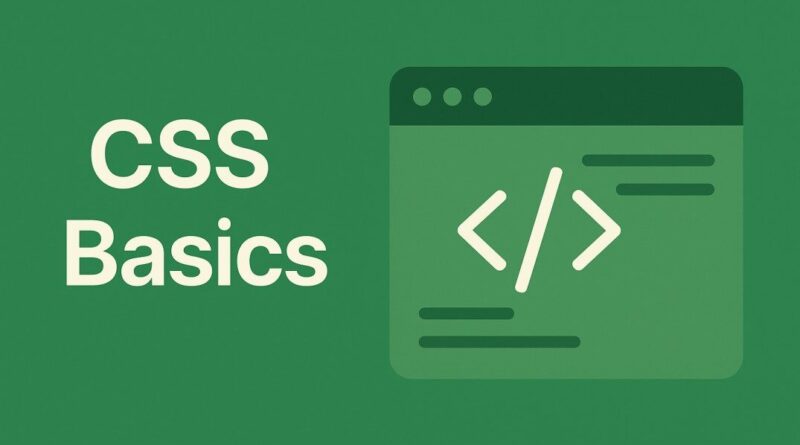CSS – Demystifying the CSS Box Model: Your Blueprint for Web Layouts!
Demystifying the CSS Box Model: Your Blueprint for Web Layouts!
Ever wondered how elements on a webpage magically arrange themselves? Or why sometimes your carefully placed image pushes everything else out of whack? The secret lies in a fundamental CSS concept: the Box Model. Think of it as the invisible blueprint that every single HTML element adheres to, dictating its size, spacing, and how it interacts with its neighbors.
Mastering the Box Model isn’t just about understanding theory; it’s about gaining the power to precisely control your web page’s layout. It’s a core skill for any aspiring web developer, a true game-changer for crafting beautiful, responsive, and intuitive user experiences. Let’s peel back the layers and discover the four crucial components that make up this essential model.
Every Element is a Box: Unpacking the Layers
Imagine every HTML element – be it a paragraph, an image, a heading, or a button – as a rectangular box. This box isn’t just a solid block; it’s composed of four distinct layers, stacked neatly on top of each other, each playing a vital role in determining the element’s total space on the page.
1. The Content Box: Where Your Story Lives
At the very heart of our box lies the Content Box. This is the innermost layer, and it’s exactly what it sounds like: where your actual content resides. If it’s a paragraph, this is where the text sits. If it’s an image, this is where the image itself is displayed. When you set a width and height property in CSS, you’re usually defining the dimensions of this content area.
- Think of it as: The canvas where you paint your message.
- Key takeaway: This is the visible, functional part of your element.
2. Padding: Giving Your Content Room to Breathe
Stepping out from the content, we encounter Padding. Padding is the transparent space between the content and its border. It acts like a cushion, providing breathing room around your content. Increasing padding pushes the border further away from the content, making your element feel less cramped and more visually appealing.
- Think of it as: The soft, protective foam inside a shipping box, keeping the valuable item from touching the edges.
- Why it matters: Good padding improves readability and visual hierarchy, preventing your content from feeling squished against other elements or borders.
3. Border: The Element’s Defining Edge
Next up is the Border. This is the line that wraps around both the content and the padding. Borders are visible and can be styled with various colors, thicknesses, and styles (solid, dashed, dotted, etc.). They serve as a clear visual separator between one element and another.
- Think of it as: The frame of a picture, or the physical edge of a real-world box.
- Its purpose: Borders help define an element’s boundaries and can be used for aesthetic purposes or to highlight specific sections.
4. Margin: Creating Space Between Elements
Finally, on the outermost layer, we have Margin. Margin is the transparent space outside the border of an element. Unlike padding, which creates space within an element, margin creates space between elements. It dictates how much empty space surrounds your box, pushing other elements away.
- Think of it as: The empty space on a shelf between two books.
- Crucial for: Controlling the spacing between different elements on your page, preventing them from colliding and ensuring a clean, organized layout.
The Box Model in Action: Visualizing the Total Space
Let’s put it all together. When you view an element on a webpage, its total space occupied is the sum of its content, padding, border, and margin.
Imagine a simple div element:
HTML
<div>Hello, Box Model!</div>
And some basic CSS:
CSS
div {
width: 200px;
height: 100px;
padding: 20px;
border: 5px solid blue;
margin: 30px;
background-color: lightblue; /* Just to make the content visible */
}
Here’s how it breaks down visually:
- Content: The “Hello, Box Model!” text will occupy a 200px wide by 100px tall area (the
widthandheightwe set). - Padding: An additional 20px of transparent space will surround the content on all four sides. This makes the total space covered by content + padding 240px wide (200 + 20 + 20) and 140px tall (100 + 20 + 20).
- Border: A 5px solid blue line will then wrap around this padded area. Now the total space for content + padding + border becomes 250px wide (240 + 5 + 5) and 150px tall (140 + 5 + 5).
- Margin: Finally, a 30px transparent space will surround the entire border. This 30px margin is what pushes other elements away from our
div. The element, including its margin, will effectively take up 310px wide (250 + 30 + 30) and 210px tall (150 + 30 + 30) on the page.
Why is the Box Model So Important?
Understanding the Box Model is crucial for several reasons:
- Precise Layout Control: It allows you to accurately size and position elements, preventing unexpected overlaps or gaps.
- Troubleshooting: When your layout isn’t behaving as expected, inspecting the Box Model in your browser’s developer tools is often the first step to diagnose the issue.
- Responsive Design: Knowing how each component contributes to an element’s total space is vital for creating layouts that adapt beautifully to different screen sizes.
- Predictable Styling: It provides a consistent mental model for how CSS properties affect an element’s visual appearance and interaction with other elements.
Level Up Your Layouts!
The CSS Box Model is the bedrock of web layout. It might seem simple at first glance, but its profound impact on how your web pages look and feel cannot be overstated. By internalizing these four core concepts – Content, Padding, Border, and Margin – you’re not just learning a CSS rule; you’re gaining a superpower for crafting pixel-perfect, engaging, and truly user-friendly web experiences.
So, the next time you’re styling an element, remember: you’re not just coloring a shape; you’re meticulously crafting a box, layer by layer, to fit perfectly into the grand design of your amazing website!




